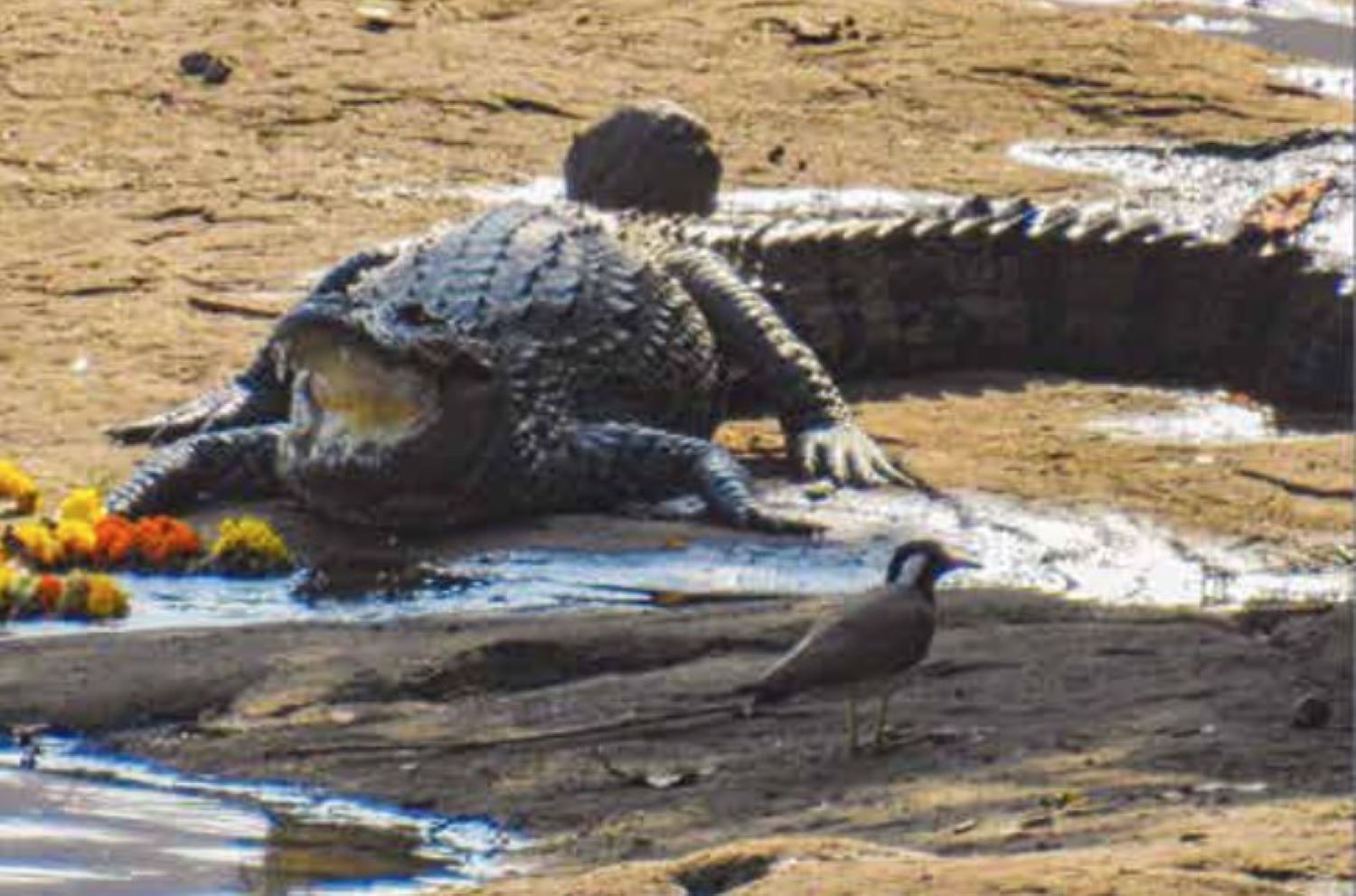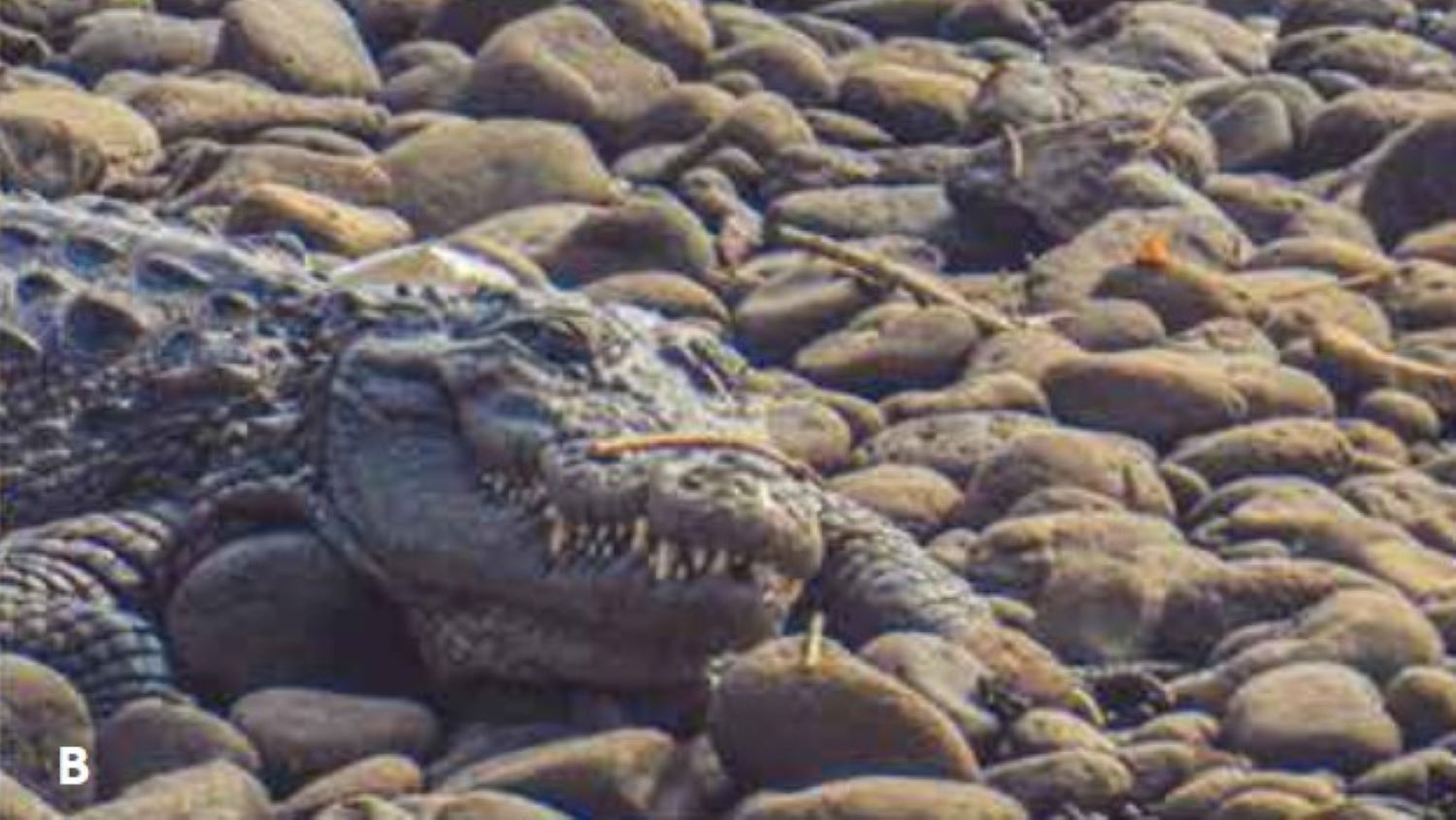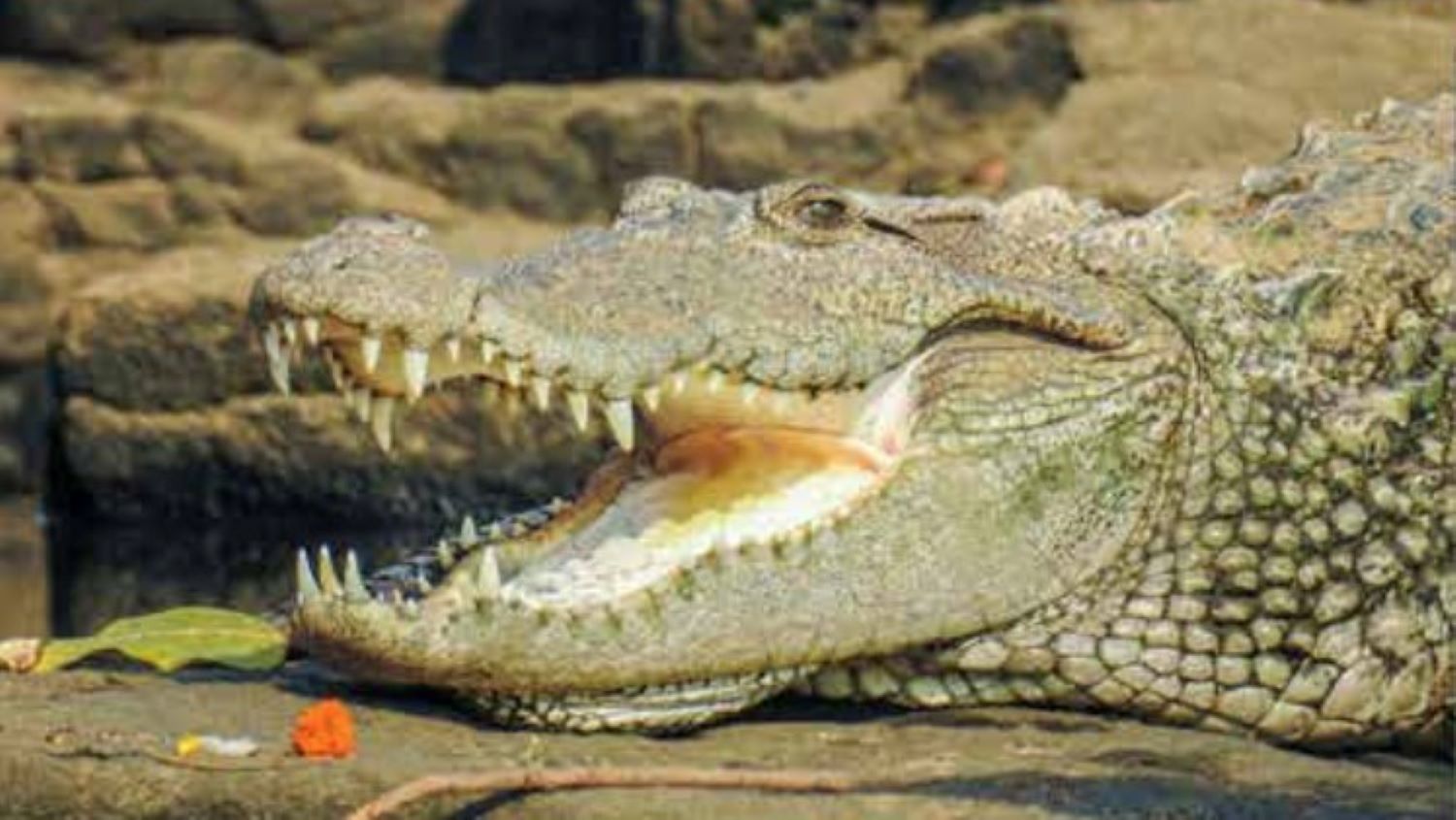Indian crocodiles seen saving dog from feral pack attack, but scientists divided over what it means
Crocodiles appeared to rescue a dog that had been chased into a river, and scientists said this unusual behavior could indicate empathy — but others are skeptical.
Scientists in India have observed mugger crocodiles engaging in some strange behaviors, including hunting in packs, using sticks as bait to lure herons and egrets within striking range, showing interest in flower garlands floating in the river and even saving a feral dog that had been chased by other dogs.
The new study, published Aug. 26 in the Journal of Threatened Taxa, suggests that mugger crocodiles (Crocodylus palustris) inhabiting the Savitri River in Maharashtra, India are more cognitively advanced than scientists currently believe.
As tantalizing as these observations are, though, an expert Live Science contacted is skeptical, noting that while the hunting behaviors have previously been reported — anecdotally — the latter two claims are almost certainly anthropomorphic conjecture.

"Crocodilians do have a sophisticated suite of behaviors," said Duncan Leitch, a biologist specializing in the neurophysiology of reptiles at the University of California, Los Angeles, who was not involved in the research. "But some of these conclusions are using a human definition of intelligence and trying to find that in crocodilians."
Related: Crocodiles and gharials are getting bizarre orange 'tans' in Nepal. Here's why.
The new study recorded several instances in which groups of mugger crocodiles swam in circles around schools of fish, creating a vortex. Their movement was presumed to have corralled the fish, and the crocodiles were observed consuming them while engaging in this behavior. Similar behaviors have previously been observed in other crocodilians.

The recent paper said mugger crocodiles appear to use sticks to lure wading birds such as cattle egrets (Bubulcus ibis). These birds use sticks in constructing their nests, and competition for prime twigs can be intense. So, a branch positioned on a crocodile snout might seem a tempting option.
Get the world’s most fascinating discoveries delivered straight to your inbox.
A 2013 paper also chronicled a series of anecdotal observations of crocodilians using sticks to entice wading birds.
"Crocodilian sensory systems are incredibly sophisticated. They have a very good sense of vision. Their sense of touch is among the finest in the animal kingdom," Leitch said. "They're definitely tuned to picking up signals from their environment. Whether or not this is intelligence in the way that we see crows using tools — it's difficult to say."
He added that the anecdotal evidence cited is not widely accepted among crocodile researchers.

The authors also said that mugger crocodiles appear to be attracted to garlands of marigold (Tagetes erecta) flowers dropped into the river during funeral rites. The researchers suggested the crocodiles may be enticed by both the color of the flowers and their antibacterial properties.
However, the crocodiles were not observed interacting with or consuming the flowers — they were simply found in proximity to them. Though the authors cited incidents in which captive crocodilians were observed playing with bougainvillea flowers, no such behavior was observed in the muggers.
Crocodile empathy?
The researchers also reported an incident in which a young dog was chased into the river by a pack of adult feral dogs. Rather than eating the dog, three mugger crocodiles seemed to nudge it back to shore.

"[The crocodiles] guided the dog away from the site where it would have been vulnerable to being attacked by the pack of feral dogs waiting on the river bank," they wrote. "These crocodiles were actually touching the dog with their snout and nudging it to move further for a safe ascent on the bank and eventually escape."
The authors interpreted this action as empathic — suggesting the crocodiles may have been concerned for the dog's safety. While it is certainly interesting that they did not consume an obvious prey item, there is little evidence that crocodilians are capable of empathy for other species, Leitch said.
"They [the authors] may be coming from an anthropomorphic perspective and trying to ascribe abilities that they potentially might not have," Leitch said.
Anecdotal findings like the ones offered in this paper may offer prospects for additional investigation. But in the absence of more rigorous research they are just that: anecdotal, Leitch said.

Richard Pallardy is a freelance science writer based in Chicago. He has written for such publications as National Geographic, Science Magazine, New Scientist, and Discover Magazine.



